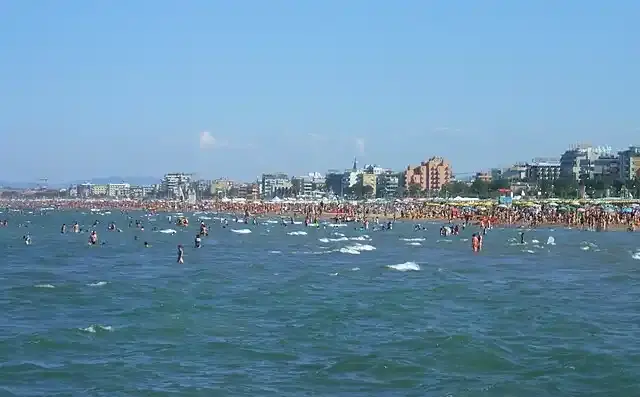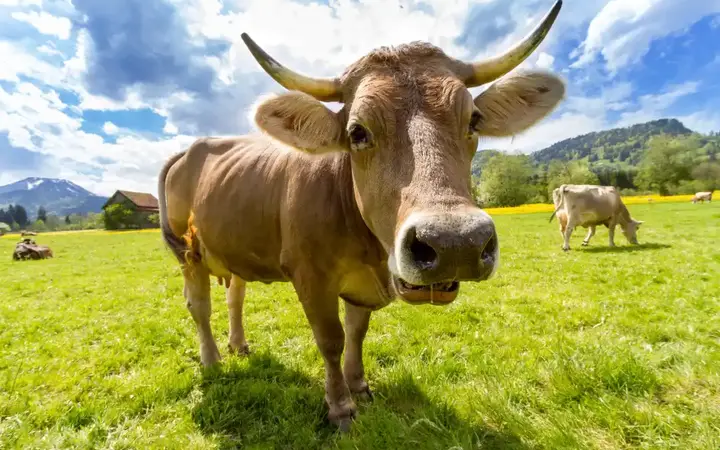The most important unexplained heavenly phenomena that the world has witnessed

The upper heavens have always captivated humanity, providing not only glimpses of the planet's atmosphere and the cosmic ocean, but also phenomena that make even the most experienced scientists confused. From glittering green flashes to fiery volcanic lightning and mysterious vortices of light, the natural world is full of incredible events yet to be explained. This article explores some of the most unusual and confusing celestial phenomena the world has ever seen, and delves into their nature, their recurrence, and the efforts of scientists and international research centers to unravel their secrets.
Show key points
- Green flashes are brief atmospheric optical phenomena visible just before sunrise or after sunset, caused by the refraction of sunlight near the horizon.
- Volcanic lightning, or "dirty thunderstorms," occurs during eruptions when volcanic debris generates static electricity that results in dramatic lightning within ash plumes.
- High-altitude red halos, also known as "red ghosts," appear above thunderstorms and are linked with powerful lightning and complex atmospheric electric fields.
- ADVERTISEMENT
- Light vortices seen post-rocket launches, such as those from SpaceX, create dazzling spirals in the sky due to fuel interactions with the upper atmosphere.
- Luminous night clouds, formed from ice crystals at very high altitudes, are most commonly observed during summer twilight near the polar regions.
- International scientific bodies, including NASA, ESA, and ISSI, collaborate globally to investigate and understand unexplained celestial phenomena using a variety of advanced tools.
- Despite technological progress, many mysterious sky phenomena remain only partially understood, continuing to inspire scientific curiosity and exploration.
1. Green flashing.

Nature and appearance: "Green flashing" is a rare visual phenomenon that occurs just before sunrise or just after sunset when a bright green spot appears on the horizon, usually lasting only a few seconds. This phenomenon occurs because sunlight is refracted by Earth's atmosphere and is more likely to be seen above water or distant horizons, where the atmosphere is most pronounced.
Recommend
Repetition and interpretation: Despite its relative rarity, the green flash can sometimes be seen in ideal conditions, such as clear skies and unobstructed views of the horizon. As the sun sets, its light bends across the layers of the atmosphere, and shorter blue and green wavelengths become visible for a brief moment.
Research and studies: Many atmospheric scientists have observed and documented the green flash. Although its basic mechanics are well understood, the exact conditions that make it visible remain the subject of continuous study.
2. Volcanic lightning.
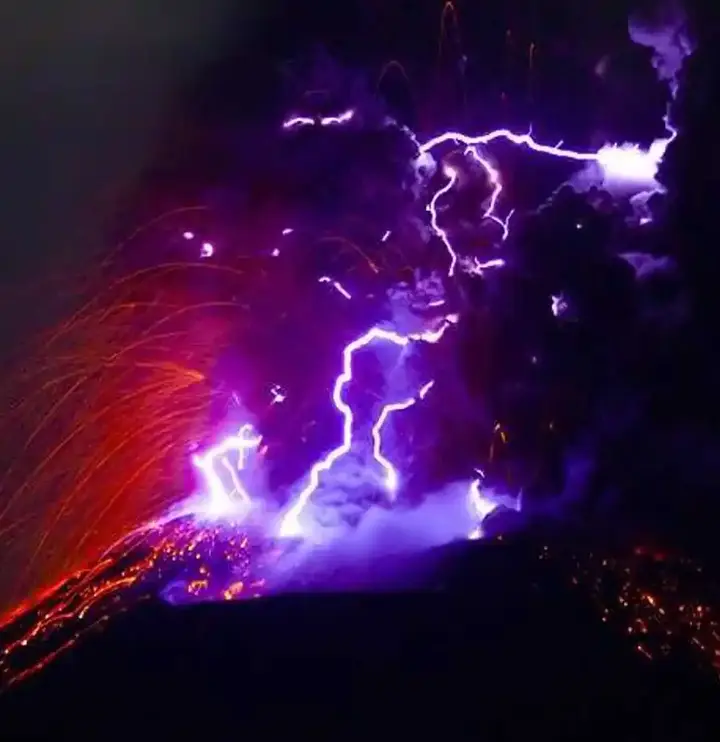
Nature and apparition: Volcanic lightning, also known as "dirty thunderstorms," is one of the most dramatic and violent landscapes. This phenomenon occurs during volcanic eruptions when ash, dust and gas are expelled into the air, generating static electricity that triggers lightning strikes within the volcano's plume.
Frequency and interpretation: Volcanic lightning has been observed during the eruption of several major volcanoes, such as Sakurajima in Japan and Eyjafjallajökull in Iceland. Although it is not present in all volcanic eruptions, it is frequent enough to be a known event, although the exact processes behind its formation are not fully understood.
Research and studies: Atmospheric scientists and volcanologists study the electrical processes that occur in volcanic clouds. International research centers such as the National Institute of Geosciences and Disaster Prevention (Japan) and the International Volcanic Health Hazard Network (IVHHN) focus on these phenomena to understand their risks and mechanisms.
3. Red halo (red ghost).
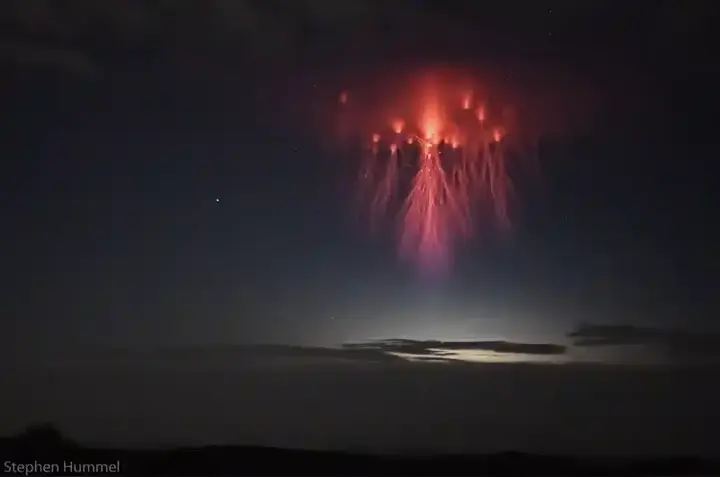
Nature and appearance: Red circles, or "red ghosts," are large-scale electrical feats that occur high above thunderstorm clouds, usually at altitudes of 50 to 90 kilometers (31 to 56 miles). These ghosts appear with a flash of reddish-orange light, often jellyfish-shaped, with probes extending downward toward the storm below.
Repetition and interpretation: Red ghosts were first photographed in 1989, a rare and relatively new find, although they have occurred over the past century. Its elusive nature makes it difficult to study, but it is thought to be associated with large positive lightning strikes and electric fields generated by thunderstorms.
Research and studies: Space agencies such as NASA have been actively studying red ghosts, using satellites and ground observatories to monitor thunderstorms and weather turbulence. The Colorado High-Altitude Observatory is one of several institutions involved in research into lightning in the upper atmosphere.
4. Sky-light vortex (SpaceX vortex).
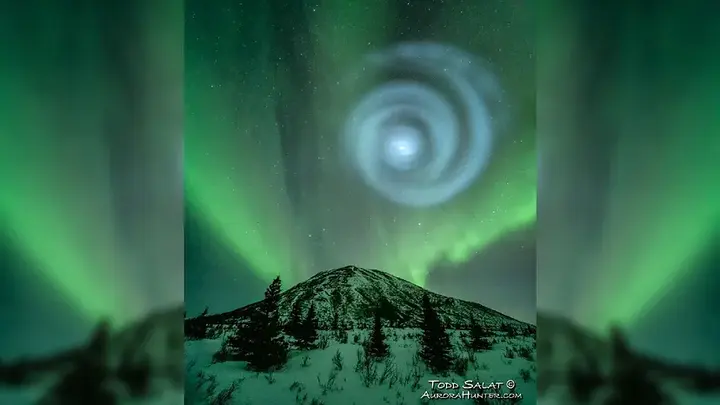
Nature and emergence: The "spiral of celestial light" is perhaps one of the most mysterious and visually dazzling celestial phenomena in recent years, often associated with launches by SpaceX or other space agencies. This phenomenon appears as a vortex or vortex of light in the night sky, usually after a rocket launch, and is sometimes confused with UFOs or supernatural phenomena.
Repetition and interpretation: The vortex of light forms when the fuel emitted by rockets or spacecraft interacts with the upper atmosphere, creating a glowing vortex. This phenomenon is rare, seen only during specific space launches, and is limited to areas where such activities occur, such as the coasts of the United States, Japan or Russia.
Research and studies: Astronomers and space engineers from organizations such as NASA, the European Space Agency and private companies such as SpaceX are well aware of these light phenomena and constantly study them to understand the behavior of gases in the upper atmosphere during rocket launches.
5. Illuminated night clouds.
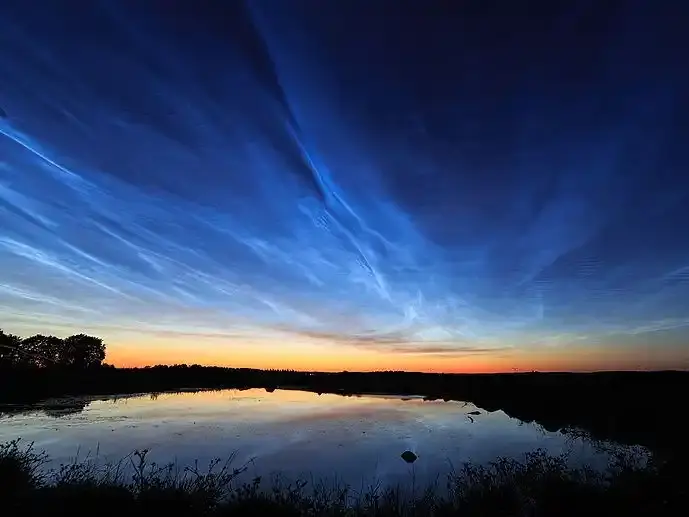
Nature and appearance: Luminous night clouds, also called "night luminous clouds," are extremely high-altitude clouds made up of ice crystals that form in the middle atmosphere, at an altitude of about 80 kilometers (50 miles) above the Earth's surface. These clouds are best visible during twilight hours and appear as light and light spots against the background of a dark sky.
Frequency and interpretation: Luminous night clouds are usually seen in polar regions during the summer, but can sometimes be observed at low latitudes. Their composition has not been fully understood, although it is thought to be related to meteorite dust particles that act as nuclei for the formation of ice crystals.
Research and studies: Organizations such as the Atmospheric Science Research Center (ASRC) at the University of Albany, New York, and the Swedish Institute of Space Physics have analyzed luminous night clouds, especially in the context of how they are affected by climate change and human activities.
6. International research efforts.

Many of the world's leading scientific bodies study unexplained celestial phenomena, often using a combination of ground observations, satellite imagery, and advanced computer simulations. These bodies include:
• NASA (National Aeronautics and Space Administration) – investigates a wide range of atmospheric phenomena, especially lightning-like ghosts in the upper atmosphere and luminous night clouds.
European Space Agency ESA – conducts studies of space-related photoluminous phenomena, including whirlpools caused by rockets and high clouds.
NOAA National Oceanic and Atmospheric Administration – investigates lightning, ghosts, and other weather events as part of broader weather and climate research.
International Space Science Institute (ISSI) – Located in Switzerland, it facilitates international cooperation in space and atmospheric research, including studies of unexplained celestial phenomena.
The bottom line.
While scientific advances have shed light on many of the mysterious phenomena observed in the sky, many questions remain unanswered. Each of these events—whether it's a passing green flash, a violent spark of volcanic lightning, or a mysterious vortex of light—offers an inspiring glimpse into the atmospheric and beyond-atmosphere workforce. International research centers continue to investigate these phenomena, contributing to a growing body of knowledge that seeks to explain the inexplicable. As technological capabilities improve, humans may one day be able to uncover the secrets that still linger in the sky above them, reminding them of the endless wonders of the natural world.
![]()
The city of Rimini on the Adriatic coast with its Roman history
Rimini blends beachside charm with rich history—from ancient Roman arches to Renaissance castles. Wander through art-filled streets, savor local pasta and fish soups, and explore unique spots like the Jampalonga Library or Fellini's first home. By the sea or in town, Rimini never stops giving. more- ADVERTISEMENT
![]()
The Seven Years' War: A Global Conflict Defining a New Era
The Seven Years' War, fought from 1756 to 1763, was the first true global war, reshaping power across Europe, North America, and beyond. It marked Britain's rise as a colonial giant and set the stage for revolutions to come, with Frederick the Great and key battles leaving lasting impacts. more- ADVERTISEMENT
![]()
Surprising fact: The environmental impact of beef outweighs cars
Surprisingly, beef production harms the environment more than cars, mainly due to cows’ methane emissions and the massive resources needed to raise them. From deforestation to acid rain, the impact is huge. Cutting down beef consumption, even slightly, makes a big difference for the planet. more- ADVERTISEMENT
![]()
Iranian carpet industry ... History and economic significance
Persian carpets, woven with stunning detail and rich history, have long symbolized beauty and prestige. Once essential for warmth, they evolved into luxurious art pieces admired in royal courts. Today, they remain a global symbol of elegance and superior craftsmanship, cherished for their unique patterns and cultural legacy. more- ADVERTISEMENT
![]()
Nine mythical places that may have already existed: tracing the line between myth and reality
From Atlantis beneath the waves to El Dorado's golden allure and Shambhala's spiritual sanctuary, these legendary places continue to spark wonder. Though their existence remains unproven, ongoing discoveries and ancient clues keep the hope alive, blending myth with mystery in humanity’s quest for hidden truths. more- ADVERTISEMENT
![]()
National Museum of Qatar and the distinctive design of the desert rose
The National Qatar Museum and its Unique Desert Rose Crystalline Structure more- ADVERTISEMENT
![]()
Personal Success: Practical Steps Towards Achieving Goals
Personal success is about finding happiness in your own growth and goals, not just wealth or fame. It's a journey shaped by your values, efforts, and ability to adapt. Success comes from setting clear goals, staying motivated, and learning from every step along the way. more- ADVERTISEMENT
![]()
Lebanon's basketball team's success story despite economic turmoil
Lebanon’s basketball scene is thriving, with its national team and clubs like Riyadi and Hikmeh making waves internationally. Despite economic struggles, passionate support from the Lebanese diaspora keeps the sport alive, turning basketball into a powerful symbol of national pride and unity across the country and its communities abroad. more- ADVERTISEMENT
![]()
How to identify and transform a bad manager: lessons learned and the path to success
Bad managers hurt morale, kill productivity, and damage a company’s success. They micromanage, lack empathy, and avoid conflict, leading to high turnover and chaos. But the journey to becoming a good manager starts with self-awareness, better communication, and trust—turning toxic workspaces into thriving ones. more- ADVERTISEMENT
![]()
How to deal with difficult people and people with a capricious mood?
How to deal with difficult people and people with a capricious mood? more- ADVERTISEMENT












